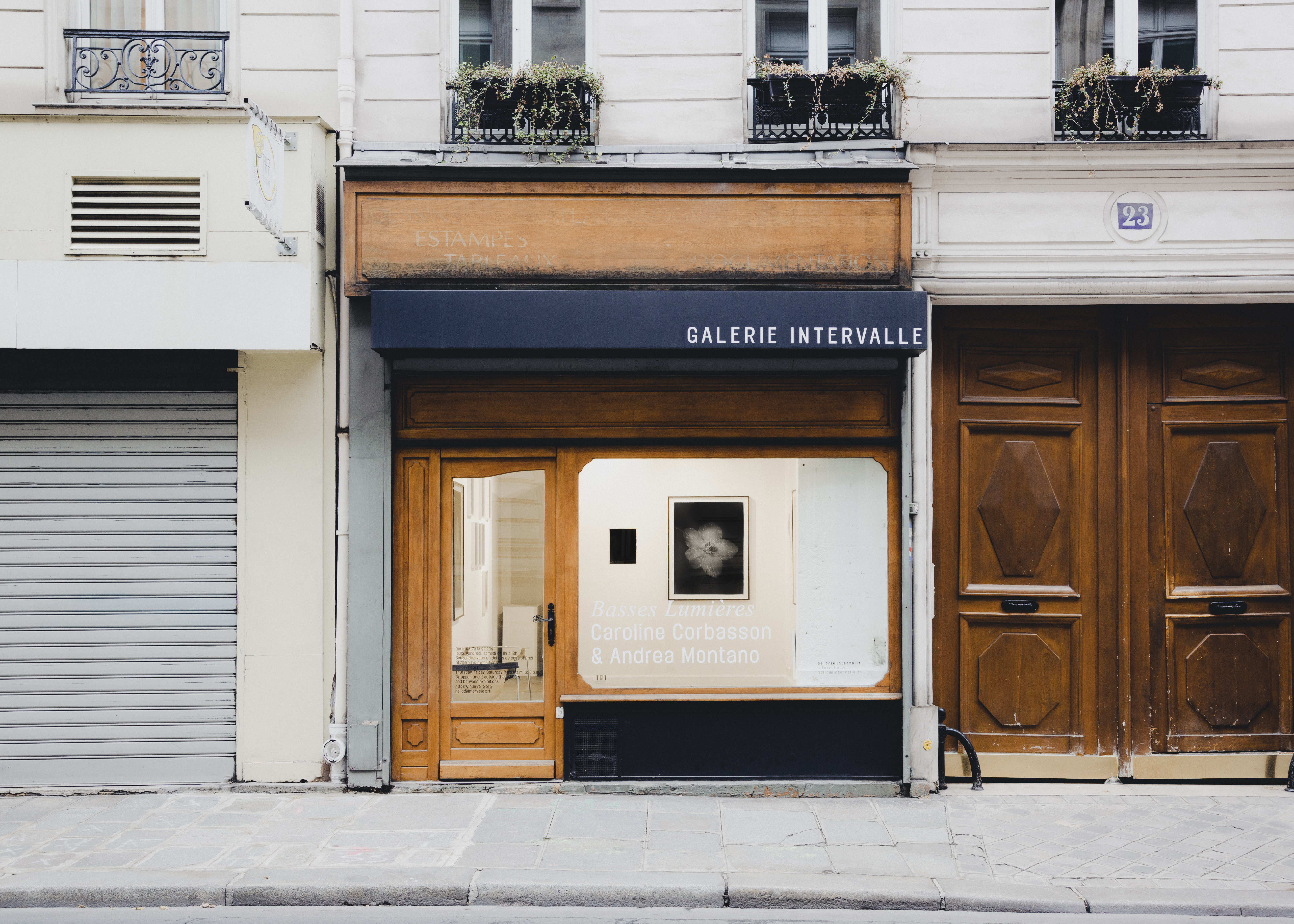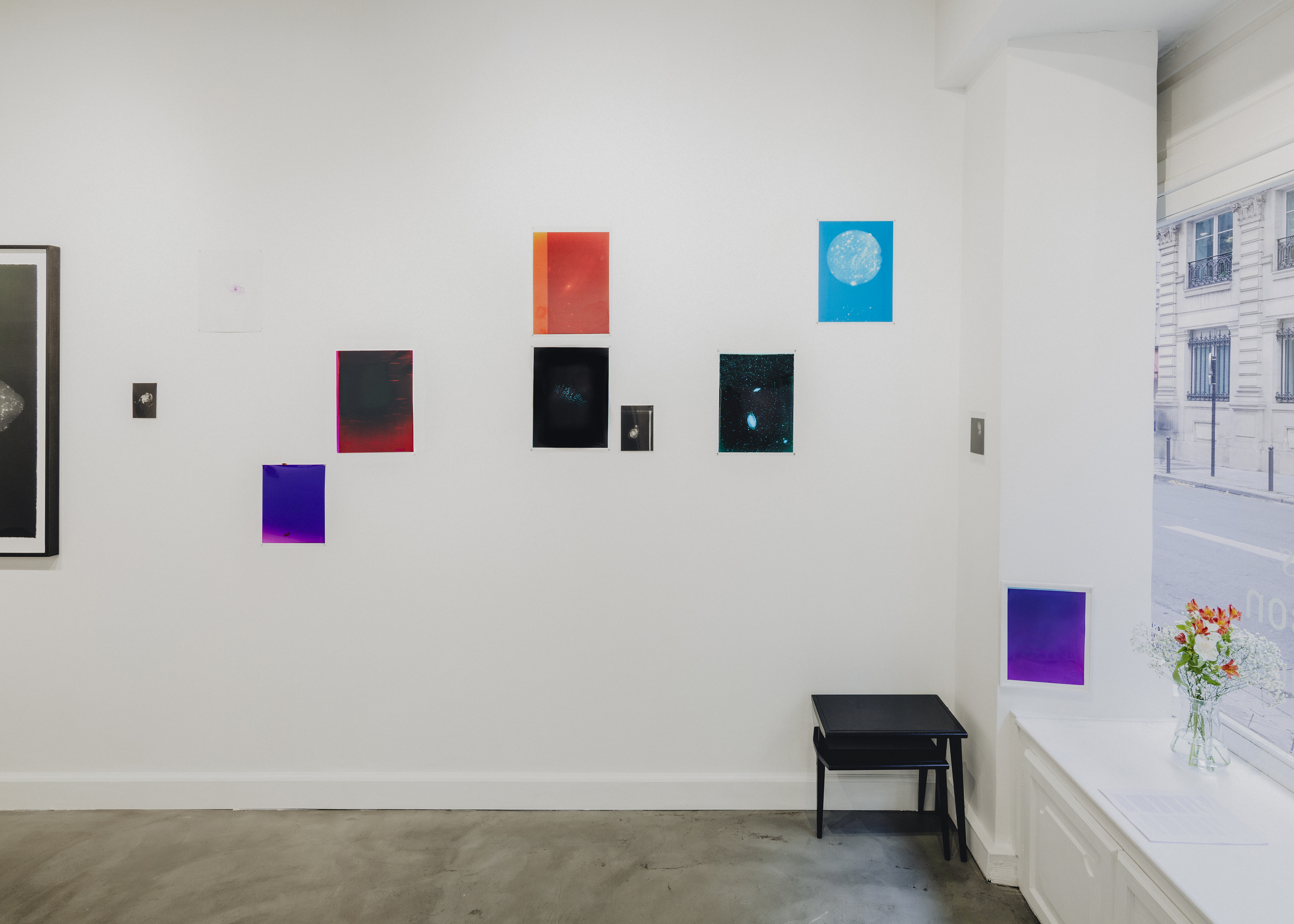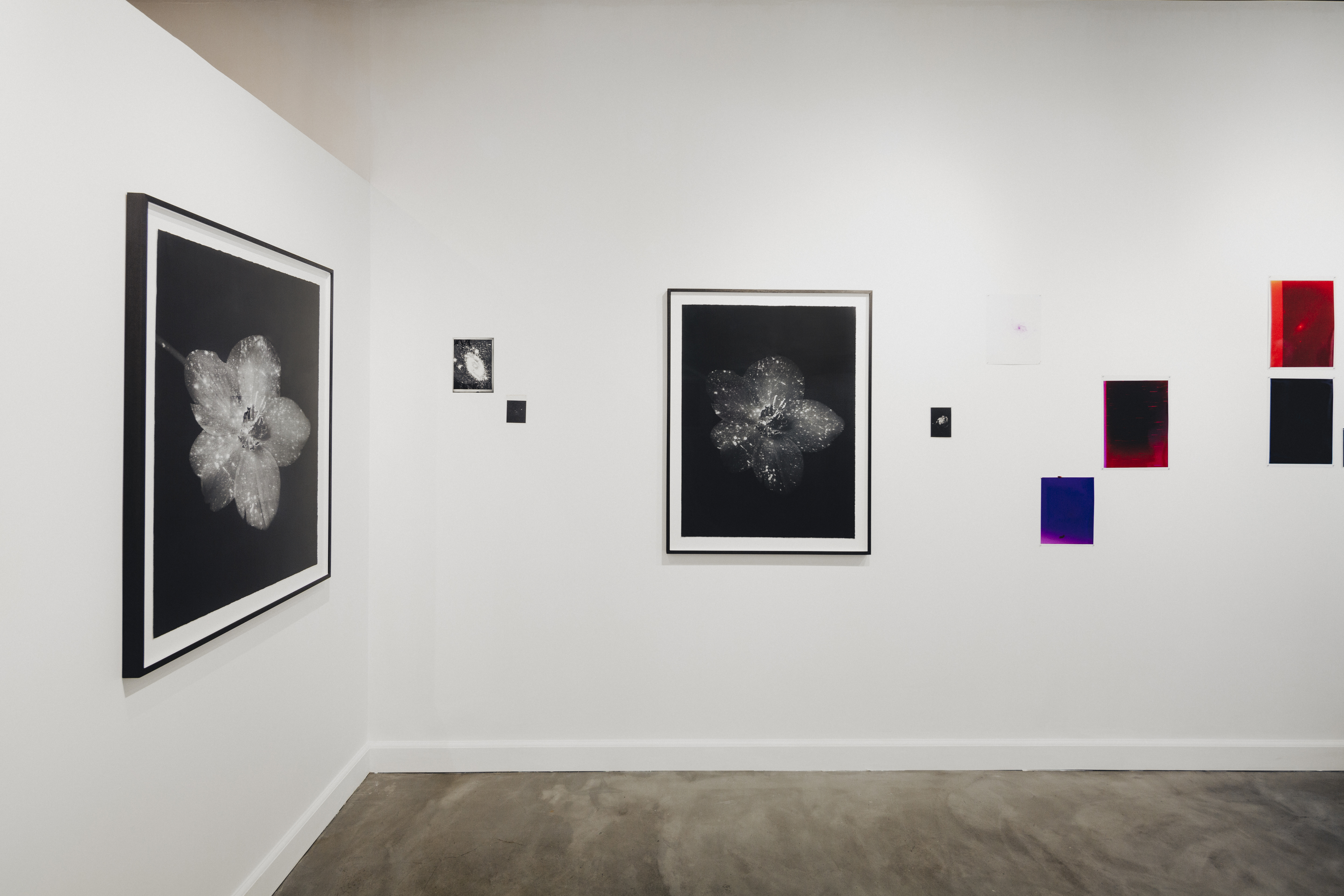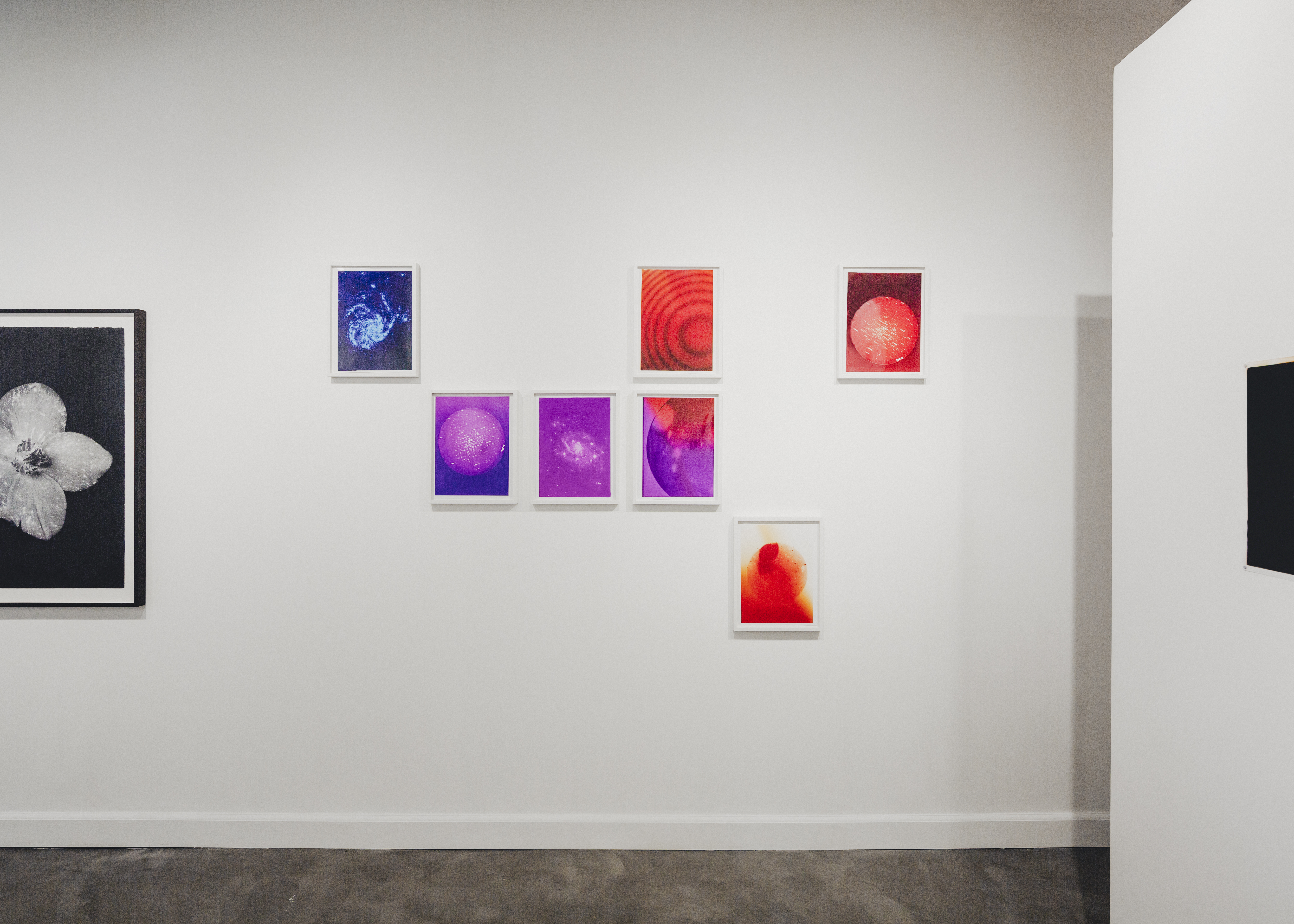Caroline Corbasson et Andrea Montano


Basses Lumières
Caroline Corbasson et Andrea Montano
Photo : Alexandre Wallon
Basses Lumières
Caroline Corbasson et Andrea Montano
Photo : Alexandre Wallon
Basses Lumières
Caroline Corbasson et Andrea Montano
Photo : Alexandre Wallon
Basses Lumières
Caroline Corbasson et Andrea Montano
Photo : Alexandre WallonFollowing a residency at the Laboratoire d'Astrophysique de Marseille (LAM) in 2019-2020, Caroline Corbasson receives a photographic archive which she does not know what to do with... For her, these hundred negatives of space views are relics, obsolete objects that she finds beautiful in themselves. When she shows them to Andrea Montano, he has this photographer's reflex to want to make prints of them. At that time, Andréa had just obtained a position in a silver lab in Aubervilliers, where he spent most of his time. It was then that the artists began to experiment with the negatives. Caroline Corbasson comes from a drawing background, she is not familiar with the photo lab. Thanks to Andrea Montano, she learns the technique of printing and discovers all its possibilities. The main thread of the Heat series is the color spectrum: from warm blue to the icy red of space. Reds are traditionally classified as hot colors, which is corroborated by many realities: infra-reds and microwaves are waves capable of heating. [...] The blues are cold. In space, the color depends on the temperature of a body. The higher the temperature of a body, the more its color, its light emitted up the electromagnetic spectrum: at 37 ° C, our body emits in infrared. At 1,000°C, incandescent steel is reddish-orange. At 3 000 °C, the filament of a lamp is white. The hottest stars at 30 000 °C are blue.
When Laure-Anne (AREA Books) discovered the first proofs of this work, the editor proposed to Caroline Corbasson and Andrea Montano to produce a book.
Tracks is another story, also conceived with four hands, during the confinements due to the Covid epidemic, when Andrea Montano and Caroline Corbasson feel "deprived of spring". They stage flowers in Caroline Corbasson's studio in Clichy. The artists deliver a work uniting two sciences a priori distant: astrophysics and botany. These two fields of research inspire them to make charcoal prints that reveal a distant filiation between the plant and mineral kingdoms. Under a black light, the petals of a flower are adorned with phosphorescent spots resulting from the phenomenon of pollination, but which under the artists' lens become the seminal traces of the stars on their terrestrial progeny.
Caroline Carbosson (1989, Fra) is the granddaughter of one of the protagonists of the foundation of the Angénieux company, created in 1935 and renowned for nearly a century for the manufacture of photographic and cinematographic lenses. A graduate of Saint Martin School, London and ENSBA Paris, Caroline Corbasson belongs to the young generation of artists who combine physical reality and human cultures. She describes the current world, its societies, its cultures, from the materials that compose it, and not from purely social or even human data. Without claiming the posture of a scientist, the artist explores the way in which the observation of space and the improvement of astronomical tools have caused a rupture between the immediate perception, that of the average individual, and that of scientists. His drawings, photographs, sculptures and videos scrutinize this expanse, relating the infinitely large, whose evolution dates back to an ante-cultural period, to the depth of the infinitely small, perceptible through the tools of science.
Text written by the artists about the Heat series:
Andrea Montano
"This project was born from an encounter with negatives. Caroline received a box of black and white film from an outdated technology. I remember opening a box of negatives where dust and stars overlapped and merged. The infinitely large and the infinitely small, Caroline's themes, jumped out at me. I wanted to see all this in a big way, to make them exist for real. To have stars in my hands, in paper and in color.
Caroline Corbasson
"The Heat series, realized with four hands, allowed us to pay homage to a photographic archive that had been bequeathed to us by the Astrophysics Laboratory of Marseille a few years ago during a residency. A hundred negatives in black and white, of the sky. Galaxies, nebulae, stars, images that are now abandoned, obsolete, because they are largely "outdated" in terms of precision. These negatives, which had been dormant for many years, have been reunited with light, their raw material. Freed from their scientific requirement, they give to see an evocative, poetic sky: so many windows on a universe which in spite of the technological advances, remains unfathomable.
Andrea Montano
Usually, I shoot my negatives, my photos; faces and landscapes. Here, for the first time, it is about foreign negatives. I have no sense of loyalty to the moment of the shooting. Moreover, these are not images of the earth, of a reality I understand. I am in space, freed from a realistic field shooting frame. These negatives allowed me to do in depth what I had always sensed and experienced in the lab; perfect, vibrant, organic color flats that the chromogenic print offers; I was free and excited to make prints according to the colors we like, without any limits. Choosing the color of the sky and the stars."
Caroline Corbasson:
Diving into the pitch black. You have to memorize the gestures, count the exposure times, know the location of each button on the enlarger. There is something mystical about handling distant sky negatives in the opaque darkness of the lab. After exposing the photosensitive paper, there is the waiting, the impatience to see: then the sacred moment of revelation. An image appears, chemical, tangible. I have often felt connected to the astronomers who, in the darkness of their domes, produced the negatives that we used. The long hours spent with Andrea in that laboratory saw a succession of different emotions; excitement, disappointment, doubt, curiosity, confidence... Trusting our intuitions, groping in the dark, failing, starting over. I must admit that some failures or technical accidents have been of great interest to me: prints that have leaked light, like a burn, or prints that have been exposed for too long, in a deep black. The laboratory is a space full of promise, of moments of grace.